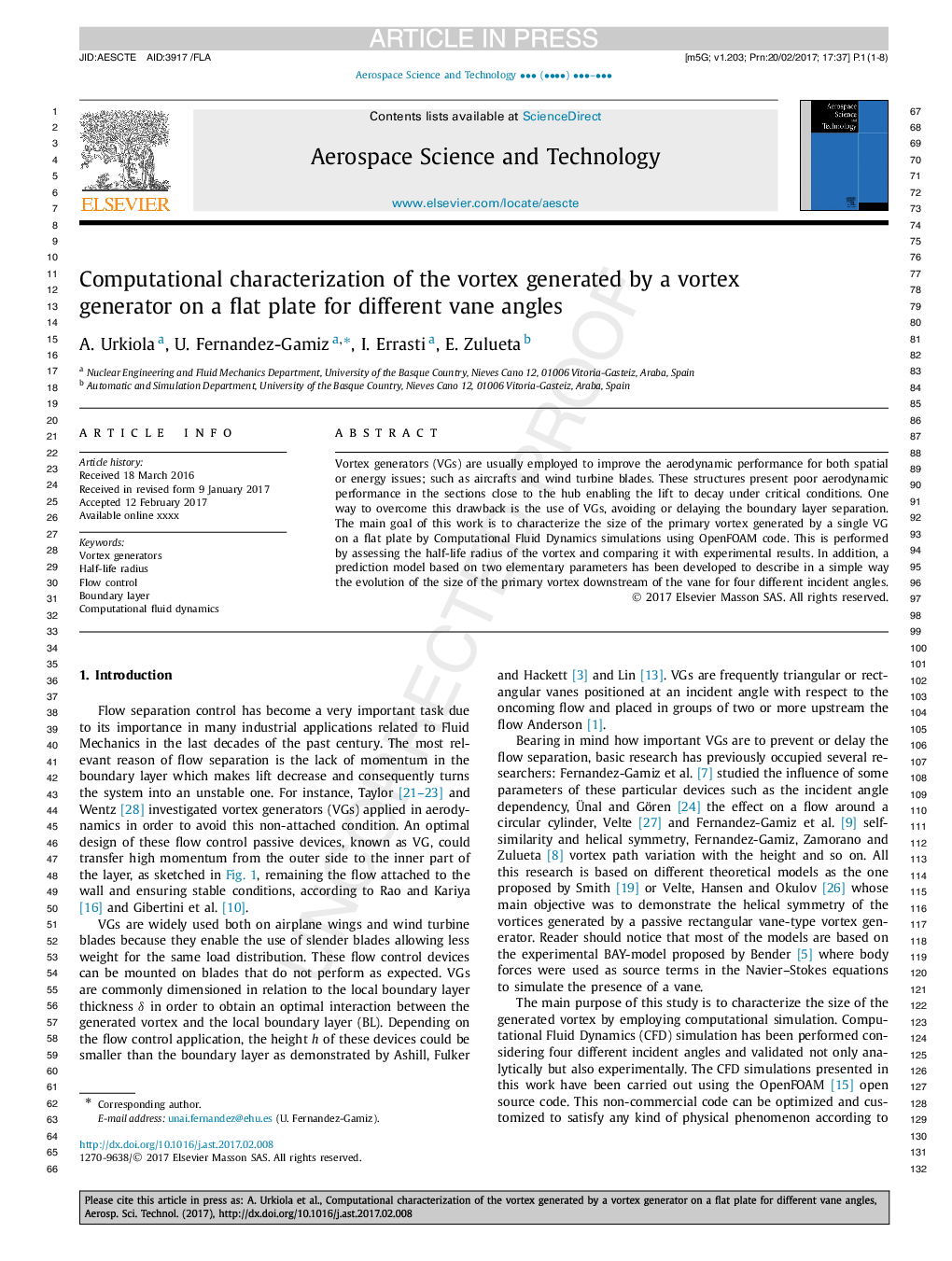| Article ID | Journal | Published Year | Pages | File Type |
|---|---|---|---|---|
| 5472971 | Aerospace Science and Technology | 2017 | 8 Pages |
Abstract
Vortex generators (VGs) are usually employed to improve the aerodynamic performance for both spatial or energy issues; such as aircrafts and wind turbine blades. These structures present poor aerodynamic performance in the sections close to the hub enabling the lift to decay under critical conditions. One way to overcome this drawback is the use of VGs, avoiding or delaying the boundary layer separation. The main goal of this work is to characterize the size of the primary vortex generated by a single VG on a flat plate by Computational Fluid Dynamics simulations using OpenFOAM code. This is performed by assessing the half-life radius of the vortex and comparing it with experimental results. In addition, a prediction model based on two elementary parameters has been developed to describe in a simple way the evolution of the size of the primary vortex downstream of the vane for four different incident angles.
Related Topics
Physical Sciences and Engineering
Engineering
Aerospace Engineering
Authors
A. Urkiola, U. Fernandez-Gamiz, I. Errasti, E. Zulueta,
